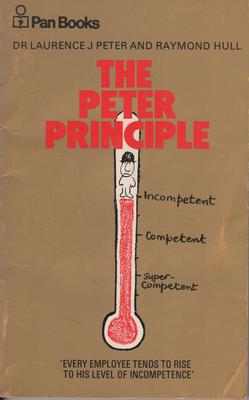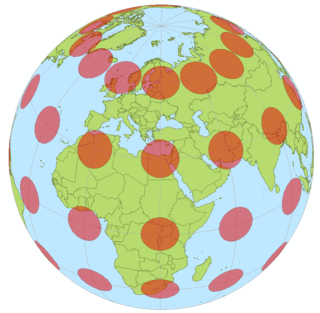E-Prime denotes a restricted form of English in which authors avoid all forms of the verb to be.
Knowledge representation and reasoning is the field of artificial intelligence (AI) dedicated to representing information about the world in a form that a computer system can use to solve complex tasks such as diagnosing a medical condition or having a dialog in a natural language. Knowledge representation incorporates findings from psychology about how humans solve problems and represent knowledge in order to design formalisms that will make complex systems easier to design and build. Knowledge representation and reasoning also incorporates findings from logic to automate various kinds of reasoning, such as the application of rules or the relations of sets and subsets.

Molecular nanotechnology (MNT) is a technology based on the ability to build structures to complex, atomic specifications by means of mechanosynthesis. This is distinct from nanoscale materials. Based on Richard Feynman's vision of miniature factories using nanomachines to build complex products, this advanced form of nanotechnology would make use of positionally-controlled mechanosynthesis guided by molecular machine systems. MNT would involve combining physical principles demonstrated by biophysics, chemistry, other nanotechnologies, and the molecular machinery of life with the systems engineering principles found in modern macroscale factories.

The Peter principle is a concept in management developed by Laurence J. Peter which observes that people in a hierarchy tend to rise to "a level of respective incompetence": employees are promoted based on their success in previous jobs until they reach a level at which they are no longer competent, as skills in one job do not necessarily translate to another.
General semantics is concerned with how events translate to perceptions, how they are further modified by the names and labels we apply to them, and how we might gain a measure of control over our own cognitive, emotional, and behavioral responses. Proponents characterize general semantics as an antidote to certain kinds of delusional thought patterns in which incomplete and possibly warped mental constructs are projected onto the world and treated as reality itself. After partial launches under the names human engineering and humanology, Polish-American originator Alfred Korzybski (1879–1950) fully launched the program as general semantics in 1933 with the publication of Science and Sanity: An Introduction to Non-Aristotelian Systems and General Semantics.
The twelve leverage points to intervene in a system were proposed by Donella Meadows, a scientist and system analyst who studied environmental limits to economic growth.

The map–territory relation is the relationship between an object and a representation of that object, as in the relation between a geographical territory and a map of it. Mistaking the map for the territory is a logical fallacy that occurs when someone confuses the semantics of a term with what it represents. Polish-American scientist and philosopher Alfred Korzybski remarked that "the map is not the territory" and that "the word is not the thing", encapsulating his view that an abstraction derived from something, or a reaction to it, is not the thing itself. Korzybski held that many people do confuse maps with territories, that is, confuse conceptual models of reality with reality itself. These ideas are crucial to general semantics, a system Korzybski originated.
Rational emotive behavior therapy (REBT), previously called rational therapy and rational emotive therapy, is an active-directive, philosophically and empirically based psychotherapy, the aim of which is to resolve emotional and behavioral problems and disturbances and to help people to lead happier and more fulfilling lives.
In semantics, mathematical logic and related disciplines, the principle of compositionality is the principle that the meaning of a complex expression is determined by the meanings of its constituent expressions and the rules used to combine them. The principle is also called Frege's principle, because Gottlob Frege is widely credited for the first modern formulation of it. However, the principle has never been explicitly stated by Frege, and arguably it was already assumed by George Boole decades before Frege's work.
John Gall was an American author, scholar, and pediatrician. Gall is known for his 1975 book General systemantics: an essay on how systems work, and especially how they fail..., a critique of systems theory. One of the statements from this book has become known as Gall's law.

Problem solving is the process of achieving a goal by overcoming obstacles, a frequent part of most activities. Problems in need of solutions range from simple personal tasks to complex issues in business and technical fields. The former is an example of simple problem solving (SPS) addressing one issue, whereas the latter is complex problem solving (CPS) with multiple interrelated obstacles. Another classification of problem-solving tasks is into well-defined problems with specific obstacles and goals, and ill-defined problems in which the current situation is troublesome but it is not clear what kind of resolution to aim for. Similarly, one may distinguish formal or fact-based problems requiring psychometric intelligence, versus socio-emotional problems which depend on the changeable emotions of individuals or groups, such as tactful behavior, fashion, or gift choices.
Fault tolerance is the resilient property that enables a system to continue operating properly in the event of failure or major dysfunction in one or more of its components. If its operating quality decreases at all, the decrease is proportional to the severity of the failure, as compared to a naively designed system, in which even a small failure can lead to total breakdown. Fault tolerance is particularly sought after in high-availability, mission-critical, or even life-critical systems. The ability of maintaining functionality when portions of a system break down is referred to as graceful degradation.
The Institute of General Semantics (IGS) is a not-for-profit corporation established in 1938 by Alfred Korzybski, to support research and publication on the topic of general semantics. The Institute publishes Korzybski's writings, including the seminal text Science & Sanity, and books by other authors who have studied or taught general semantics, such as Robert Pula, Irving J. Lee, Wendell Johnson, and Stuart Chase. Every year since 1952, it has sponsored the Alfred Korzybski Memorial Lecture, with presenters from a broad range of disciplines, from science to medicine to entertainment, including names like actor Steve Allen, psychologist Albert Ellis, scientist and visionary R. Buckminster Fuller, linguist Allen Walker Read, and philosopher F. S. C. Northrop. The Institute offers periodic seminars, workshops and conferences and is headquartered in New York City.

Organizational architecture, also known as organizational design, is a field concerned with the creation of roles, processes, and formal reporting relationships in an organization. It refers to architecture metaphorically, as a structure which fleshes out the organizations. The various features of a business's organizational architecture has to be internally consistent in strategy, architecture and competitive environment.
The law of triviality is C. Northcote Parkinson's 1957 argument that people within an organization commonly give disproportionate weight to trivial issues. Parkinson provides the example of a fictional committee whose job was to approve the plans for a nuclear power plant spending the majority of its time on discussions about relatively minor but easy-to-grasp issues, such as what materials to use for the staff bicycle shed, while neglecting the proposed design of the plant itself, which is far more important and a far more difficult and complex task.
Human error is an action that has been done but that was "not intended by the actor; not desired by a set of rules or an external observer; or that led the task or system outside its acceptable limits". Human error has been cited as a primary cause contributing factor in disasters and accidents in industries as diverse as nuclear power, aviation, space exploration, and medicine. Prevention of human error is generally seen as a major contributor to reliability and safety of (complex) systems. Human error is one of the many contributing causes of risk events.

Levels of Knowing and Existence: Studies in General Semantics is a textbook written by Professor Harry L. Weinberg that provides a broad overview of general semantics in language accessible to the layman.
Marjorie Kendig Gates (1892–1981), best known as M. Kendig, was an American administrator, director of the Institute of General Semantics from 1950 until 1965, and co-worker of Alfred Korzybski, who developed the theory of general semantics. She completed Korzybski's collected writings after his death in 1950.
In computer science, robustness is the ability of a computer system to cope with errors during execution and cope with erroneous input. Robustness can encompass many areas of computer science, such as robust programming, robust machine learning, and Robust Security Network. Formal techniques, such as fuzz testing, are essential to showing robustness since this type of testing involves invalid or unexpected inputs. Alternatively, fault injection can be used to test robustness. Various commercial products perform robustness testing of software analysis.
In information security, computer science, and other fields, the principle of least privilege (PoLP), also known as the principle of minimal privilege (PoMP) or the principle of least authority (PoLA), requires that in a particular abstraction layer of a computing environment, every module must be able to access only the information and resources that are necessary for its legitimate purpose.






